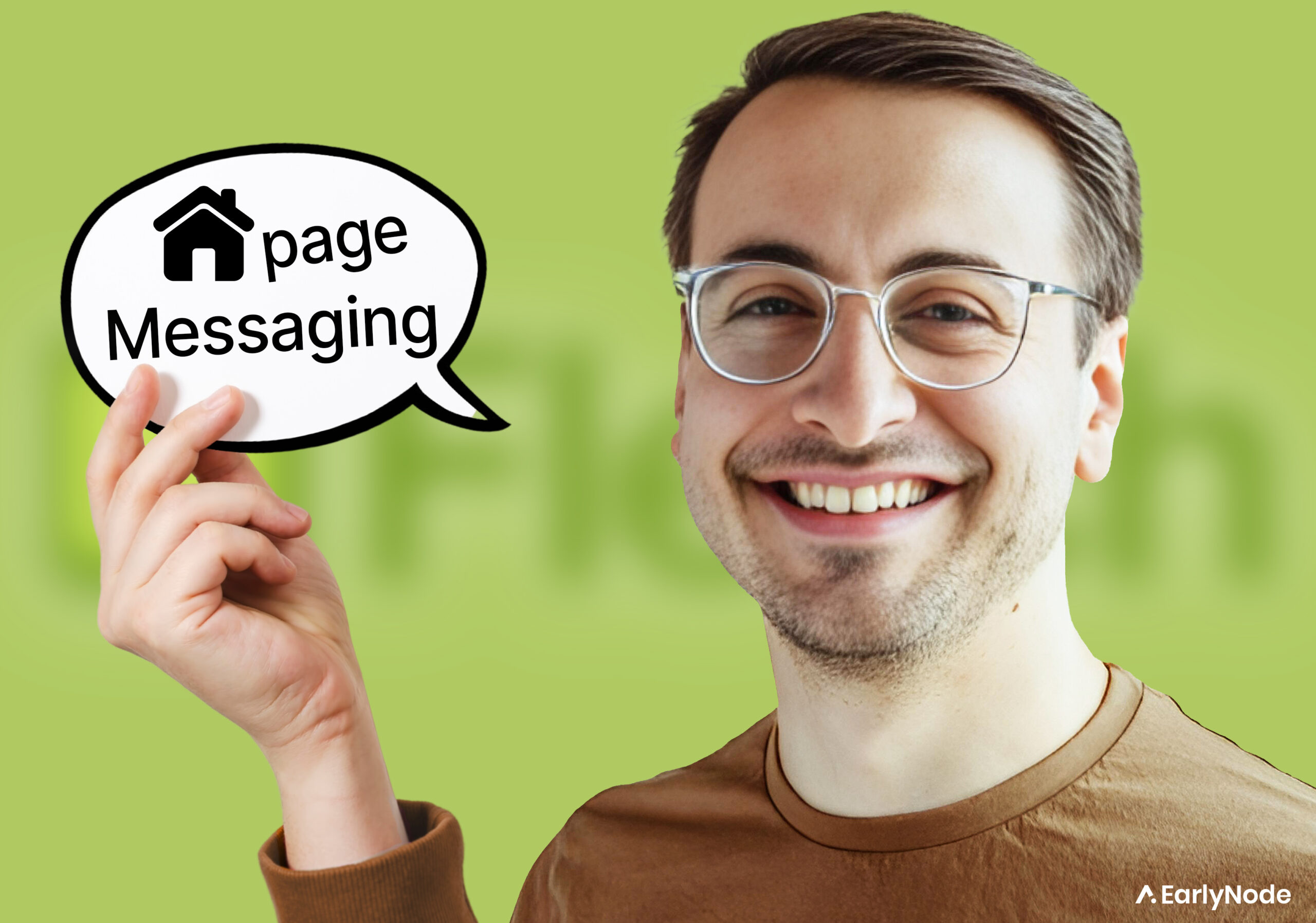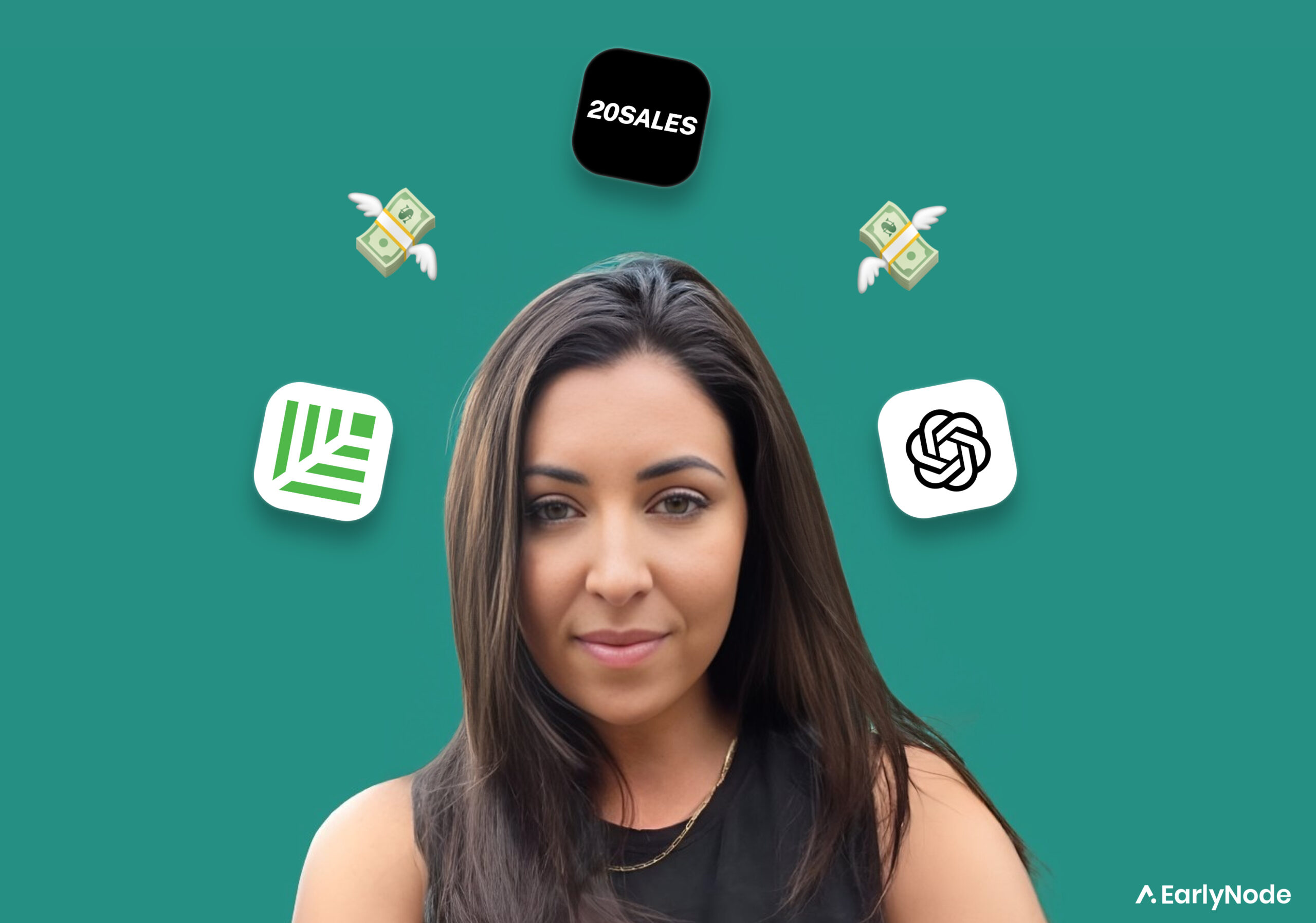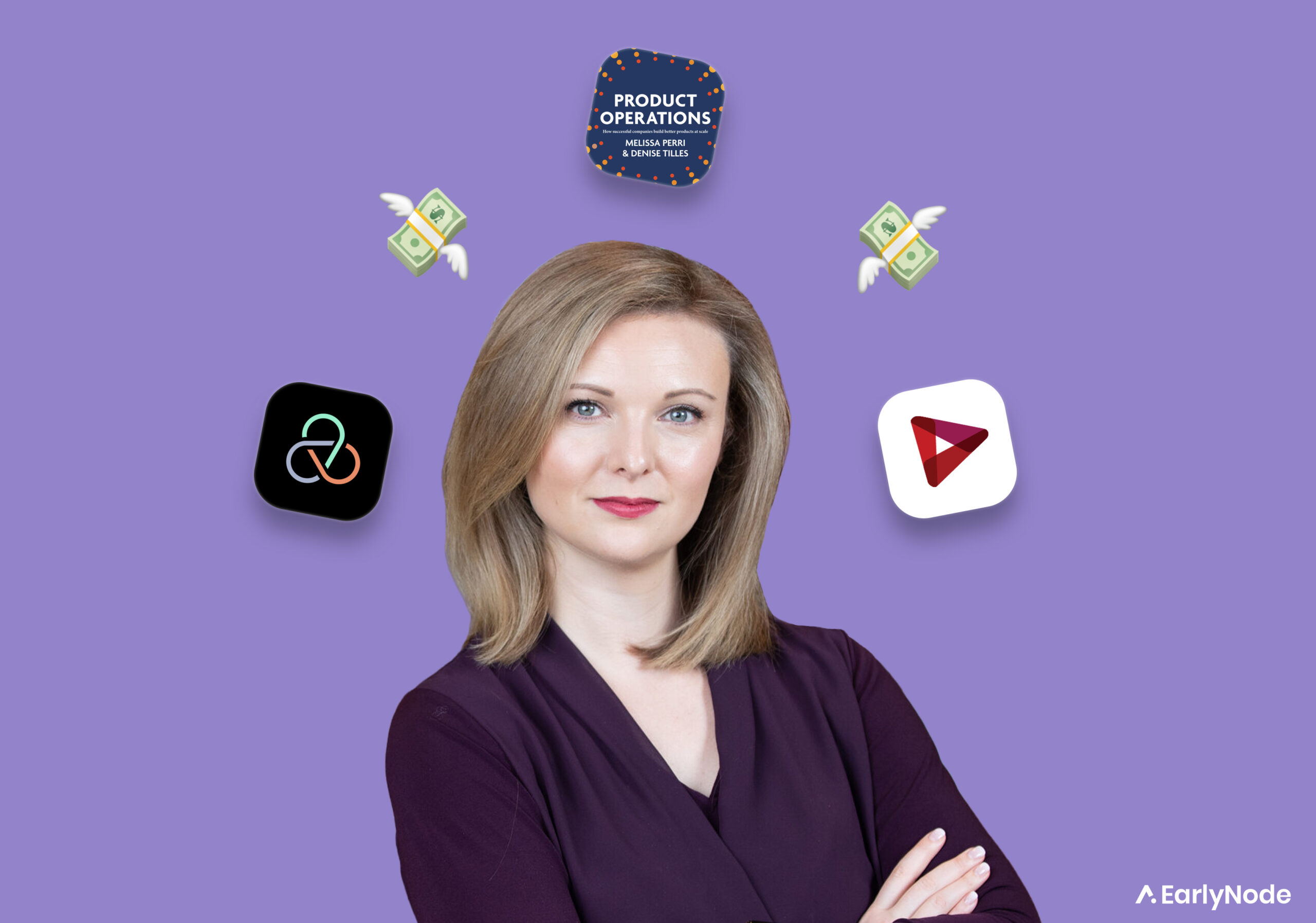Acing PLG with Elena Verna (former CMO at Miro)

Elena is a PLG badass. She led growth at Miro, Survey Monkey, and Amplitude and has advised companies like Krisp and Veed.io. During her time as VP of Growth at SurveyMonkey, Elena’s magic touch catapulted the company’s user base to a staggering 60 million with more than 600,000 paying users!
This newsletter issue is all about Product-Led Growth so who better to learn from than the Queen of PLG herself. We’ve got all her juiciest tips and tactics just for you.
In today’s email you’ll learn:
- The three elements of product-led growth.
- Two powerful monetization tactics you probably didn’t know about.
- Why SaaS startups should shift their growth frameworks from funnels to loops.
➿ Ditch the funnel: Loop your way to skyrocketing revenue
If you want to be a fast-growing SaaS startup, you’ve got to go for exponential growth, not the slow and patient linear path.
According to Elena, funnels limit you to linear growth in two ways:
- When businesses use funnels, each team just does its own thing. Marketing cares about top of funnel. Product worries about engaging users. And Sales is all about hitting their next quota. When departments aren’t aligned, potential customers slip through the cracks. For example, Marketing might be killing it with leads, but Product isn’t great at activating them. In other words, you have a leaky funnel.
- The other issue with the funnel is that it constantly needs more: more channels, more cash, and more people at the top just to get something at the other end. In the end, you’ll hit a limit, and it just won’t scale.
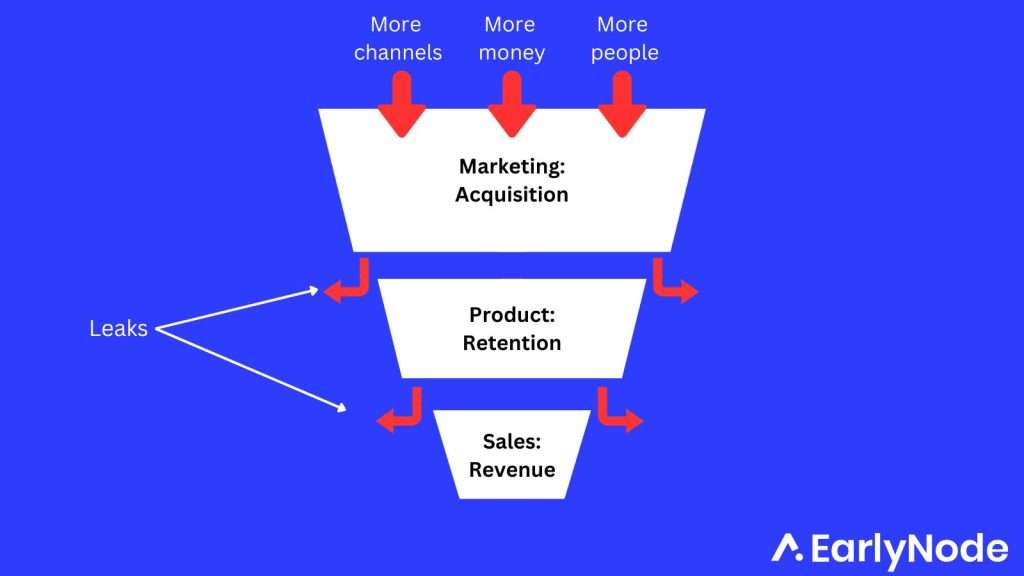
So if you want exponential growth to outcompete other funded startups, Elena says there’s a way to do that – growth loops!
“Loops create a sustainable, predictable, and competitively defensible engine for your growth model,” she says.
⚙️ How it works
Picture a loop as the lively cousin of Jim Collins’ flywheel concept (from his book, Turning The Flywheel). Imagine a self-sustaining cycle where each action or step takes an input, cranks out a bountiful output, and then pours it back into the input for another go-around.
As a SaaS startup, your focus should be on how to create loops for acquisition, retention, and monetization, aka the PLG Trilogy.
PLG is…a trilogy? 🤨
Many SaaS founders approach product-led growth as an all-or-nothing strategy but it’s more nuanced than that.
A startup can actually adopt product-led growth in 3 parts:
- Product-led acquisition
- Product-led retention
- Product-led monetization
This means you can either have zero, one, or all 3 parts of PLG functioning in your business.
But where do you start? Elena believes every B2B SaaS company has to first nail product-led retention. In PLG, retention is about activation and engagement. If your product isn’t activating and engaging users, then the chances of creating product-led acquisition in your company will be close to zero.
Why? Because product-led acquisition happens when users create a trigger that attracts other users, like inviting or referring their colleagues. If your customers are not regularly using your product, that means fewer opportunities to kickstart the acquisition flywheel.
Let’s dive deeper into the loops that power each of those 3 elements of product-led growth.
Acquisition Loop
A product-led acquisition loop looks like this: A new user (input) completes an action or step that produces value. That value attracts a new user (output) who now becomes the new input and restarts the loop.
So in effect, each new user drives additional users into your ecosystem.
If you nail this you won’t have to rely on big marketing budgets to create awareness and find new users.
When Elena was VP of Growth at SurveyMonkey, they developed and optimized its acquisition loop. Today it is still one of SurveyMonkey’s strongest growth systems.

Elena calls this the “casual contact” loop. It works like this: a user distributes content using your product and another person becomes aware of your brand by interacting with that content. A typical example is the “Powered by [brand]” symbols you find on some websites.
Try to identify opportunities for these casual contact loops, but if you want to be successful with it be sure to optimize the user experience for both your customers and the recipient whose first impression of your product will be via the casual contact loop.
Calendly is another great example. Each time somebody sends an invite, they’re both using and promoting Calendly. If the other user likes it, they’ll sign up and also share their invite, which creates a viral loop. That’s how Calendly gained new users with no extra effort and grew to $30 million ARR!
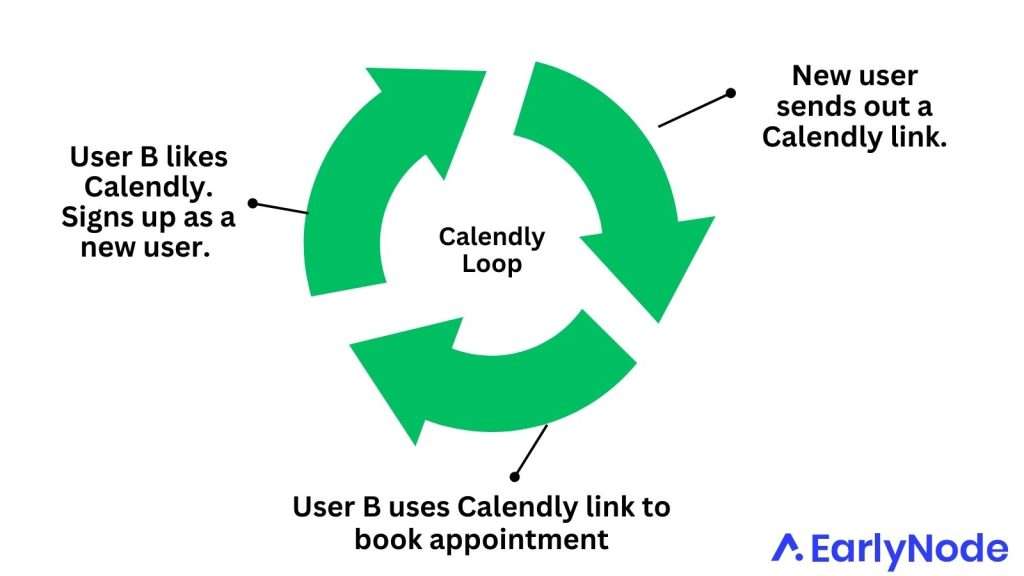
Retention Loop
You can drive product-led retention through habitual loops.
A habitual loop has one goal: to drive the user back into your product with actions that generate additional triggers to bring back other collaborators to engage with your product. Elena calls it usage triggers. This way, you’re proactively increasing customer engagement.
A typical example is receiving a notification about an action a collaborator has taken in your product. You’d want to know what they did. When you get there, you’re very likely to respond to their input by adding something to the project. This will create another trigger to notify the collaborator about your action, prompting them to come back. And on it goes.
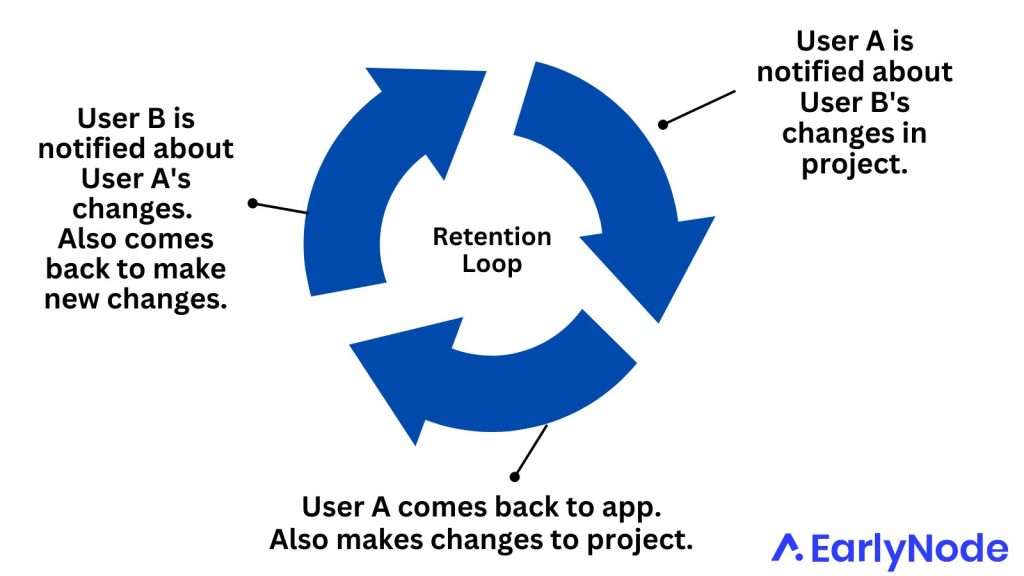
In short, to create a retention loop, find opportunities to bring back customers to the product so that they’re continuously engaging with your app and triggering other users to come back.
Monetization Loop
Product-led monetization is typically self-serve. Users purchase the product without going through a sales team. But two tactics most companies overlook are monetization awareness, and direct vs indirect monetization. Using these two elements in your monetization strategy could boost your revenue. Let’s look at what they are:
Monetization Awareness
Many freemium users are in the dark about the goodies tucked away in your paid plans. Without a clue about these enticing offerings, they won’t know if they need them, let alone consider upgrading. So, it’s time to shine a light on those hidden features to entice them to take the leap.
Expose your paid offerings to your free users and watch your conversions soar.
You can do this via feature walls, usage walls, or any way to show them the value of your paid offering.
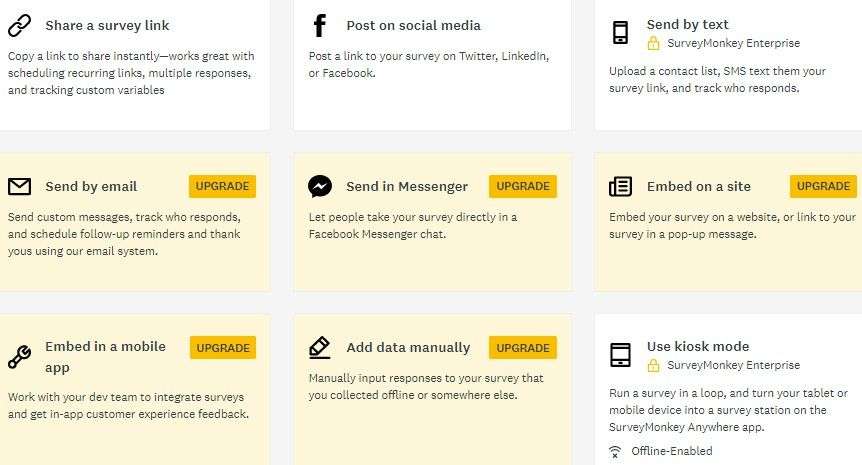
Elena did it at SurveyMonkey. She got the UI team to trigger the product’s paid features to show in-app so that each free user saw at least 3 of them. SurveyMonkey’s conversion rates went up. The tiniest changes can sometimes have the biggest impact.
Direct vs Indirect Monetization
We’d wish it was easy to just directly monetize every user; they start the free trial, and if they like your product they convert to paid customers. Simple.
But it’s not always the case if you use freemium – you’ll have users who won’t pay. It might be tempting to get rid of them. But you can actually monetize them, indirectly!
The key here is to make sure these free users are getting the word out and attracting more paying users to your product since these free users are part of your acquisition loop. If they’re doing that, they’re not just freeloaders, they’re promoters. You’re actually indirectly monetizing them! 🚀

